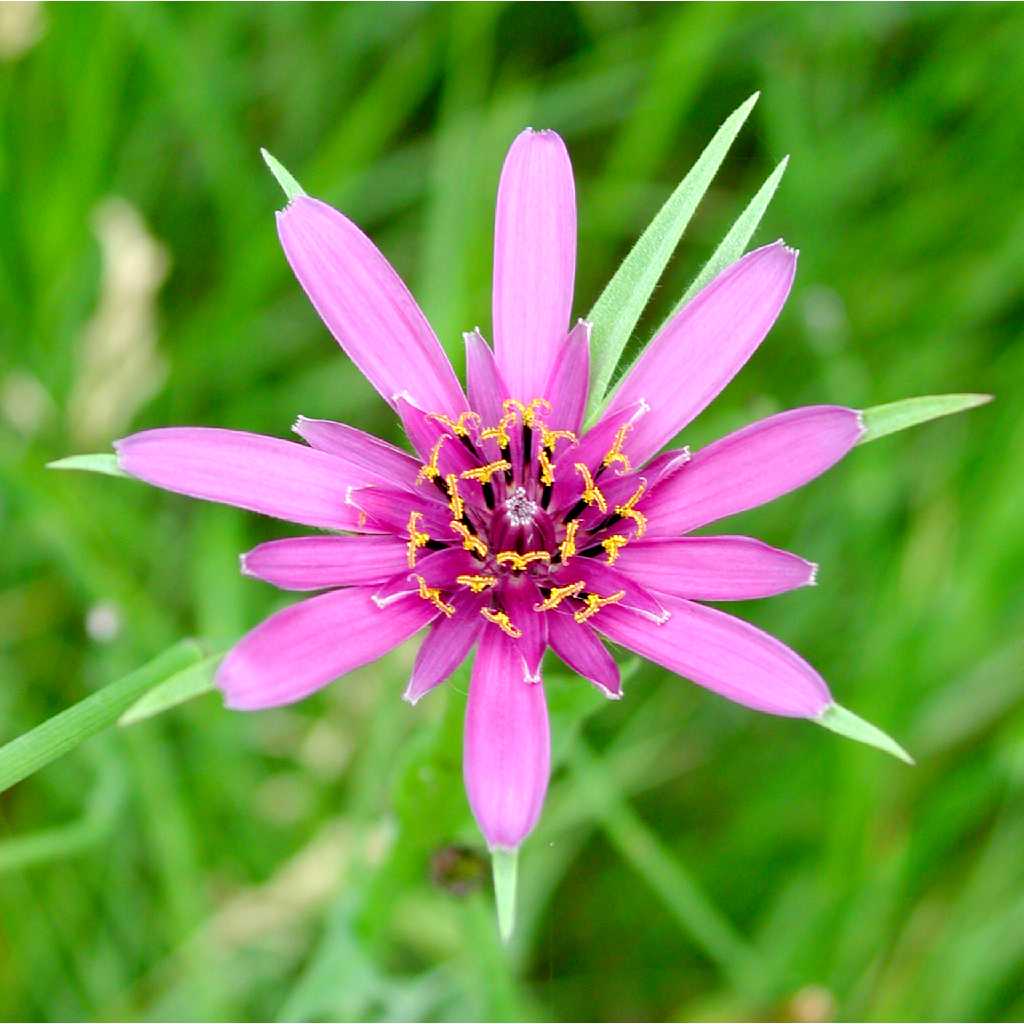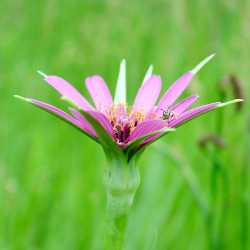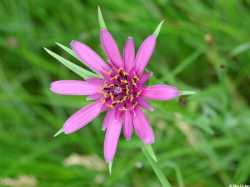|
|
|
|
Family: Asteraceae
salsify
|
Plants 40-100(-150) cm. Leaves: apices straight (not recurved or coiled), faces usually glabrous. Peduncles distally inflated. Involucres conic in bud. Outer florets usually shorter than or equaling phyllaries; corollas purple. 2n = 12. Flowering Apr-Aug. Disturbed sites; 200-2000 m; introduced; Alta., B.C., Man., N.B., N.S., Ont., Que.; Ariz., Ark., Calif., Colo., Conn., Del., D.C., Ga., Idaho, Ill., Ind., Iowa, Kans., Ky., Maine, Md., Mass., Mich., Mo., Mont., Nebr., Nev., N.H., N.J., N.Mex., N.Y., N.C., Ohio, Okla., Oreg., Pa., S.Dak., Tenn., Texas, Utah, Vt., Va., Wash., W.Va., Wis., Wyo.; Europe; n Africa; introduced, Pacific Islands (Hawaii); Australia. Tragopogon porrifolius is occasionally cultivated in Europe and naturalized across much of North America. It grows typically in sites drier than those of T. pratensis and in sites shadier and/or moister than those of T. dubius. As currently circumscribed, it may not be monophyletic, and nomenclatural changes for the populations here may be required. In North America, T. porrifolius hybridizes with both T. dubius and T. pratensis (= T. ×neohybridus Farwell, described from North America, and T. ×mirabilis Rouy, described from Europe).
Glabrous biennial 4-10 dm; lvs to 30 cm, and nearly 2 cm wide, tapering rather gradually from the base, not recurved at the tip; peduncles evidently enlarged and fistulous under the heads in fl and fr; invol bracts mostly ca 8, 2.5-4 cm in fl, slightly to strongly surpassing the purple rays, elongating to 4-7 cm in fr; achenes 25-40 mm, the body thicker than in no. 2 [Tragopogon dubius Scop.] and usually only 10-16 mm, abruptly contracted to the long, slender beak; pappus brownish; 2n=12. Roadsides and waste places, mostly in rather moist soil; European cultigen, established as a weed here and there over much of the U.S. Apr.-Aug. Gleason, Henry A. & Cronquist, Arthur J. 1991. Manual of vascular plants of northeastern United States and adjacent Canada. lxxv + 910 pp. ©The New York Botanical Garden. All rights reserved. Used by permission. |




